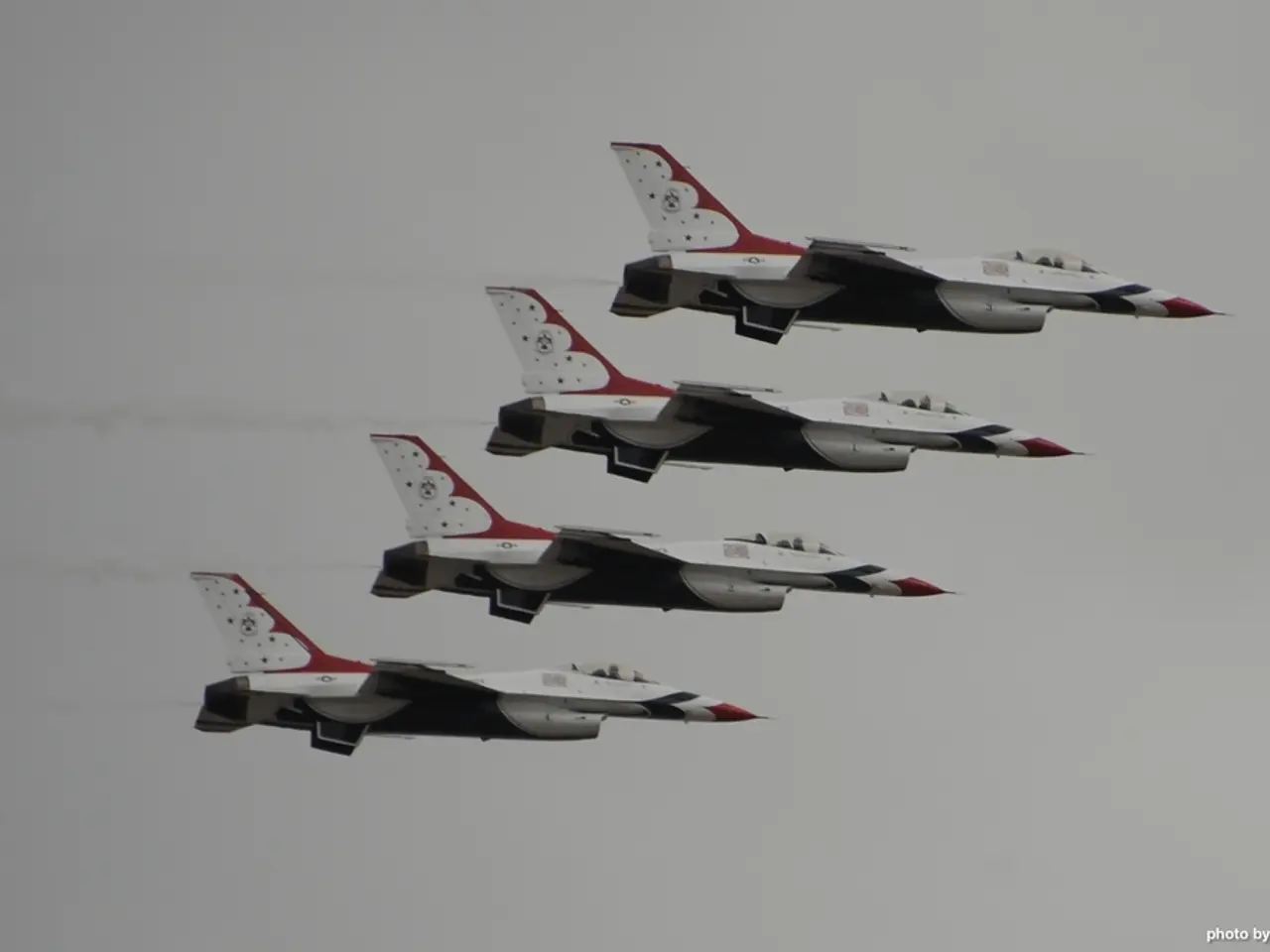Russian warplanes, consisting of bombers and fighters, were detected and intercepted by NORAD in close proximity to Alaska.
The Alaskan Air Defense Identification Zone (ADIZ) serves as a buffer for air defense, extending from America's sovereign territory into international airspace. This region has seen regular incursions by Russian aircraft, as reported in multiple incidents over the past few years.
On July 22, Russian warplanes, including Tu-95 Bear bombers and Su-35 Flanker fighter jets, were detected in the Alaskan ADIZ. North American Aerospace Defense Command (NORAD) responded by sending approximately 10 aircraft to identify, monitor, intercept, and escort the Russian planes out of the zone. The encounter lasted over three hours.
NORAD characterizes these flights as provocative actions requiring close monitoring and interception to ensure U.S. airspace security. The command stated that this type of Russian activity in the Alaskan ADIZ occurs regularly and is not seen as a threat. However, the conduct of Russian Su-35 aircraft during interactions with U.S. Air Force planes has been deemed unsafe, unprofessional, and potentially dangerous in the past.
The Russian Ministry of Defense often views these flights as standard patrols or exercises that do not violate international law or airspace sovereignty. They frame them as legitimate military operations within their own strategic interests.
The Air & Space Forces Association supports Airmen, Guardians, and their families, providing resources and information at afa.org.
The U.S. military sometimes conducts flights in other countries' declared ADIZ areas, such as around disputed islands in the South China Sea. However, unlike the Alaskan ADIZ, these flights do not occur as frequently.
It's important to note that the Russian aircraft did not enter U.S. or Canadian sovereign airspace during the July 22 encounter, but were operating in international airspace. This article was updated on July 23 with additional details.
NORAD employs a layered defense network to detect, track, and respond to aircraft in the ADIZ. The command uses a variety of aircraft, including U.S. Air Force F-35s, F-16s, an E-3 Sentry command and control plane, and three KC-135 tankers, to carry out these missions.
This is not an isolated incident. In 2020 alone, there were at least eight incursions reported involving Tu-95 bombers escorted by other Russian aircraft. These flights have led to direct intercepts by U.S. fighter jets, such as F-22s, responding to the Russian presence near U.S. airspace[1].
The long-range flight of two Tu-95 bombers occurred roughly two months after a mass drone attack on Russian airfields, resulting in the destruction or severe damage of at least six Tu-95 aircraft on the ground.
President Donald Trump has expressed frustration with Russian President Vladimir Putin over stalled peace talks. The U.S. has agreed to an arrangement with NATO to backfill aid sent to Ukraine, including prized Patriot missile defense systems.
[1] Source: North American Aerospace Defense Command (NORAD) press releases and statements.
- The Alaskan Air Defense Identification Zone (ADIZ) is monitored by the North American Aerospace Defense Command (NORAD) for air defense, extending into international airspace.
- On July 22, Russian warplanes like Tu-95 Bear bombers and Su-35 Flanker fighter jets were detected in the Alaskan ADIZ, prompting a response from NORAD.
- The NORAD response involved sending approximately 10 aircraft to identify, monitor, intercept, and escort the Russian planes out of the zone, with the encounter lasting over three hours.
- NORAD classifies these flights as provocative actions, necessitating close monitoring and interception to ensure U.S. airspace security.
- The Russian Ministry of Defense justifies these flights as standard patrols or exercises that do not infringe upon international law or airspace sovereignty.
- The U.S. military, like the Air Force, sometimes conducts flights in other countries' declared ADIZ areas, such as those around disputed islands in the South China Sea.
- Sources report at least eight incursions involving Tu-95 bombers escorted by other Russian aircraft in the year 2020 alone, resulting in direct intercepts by U.S. fighter jets, including F-22s.
- In a rare event, two Tu-95 bombers flew long-range flights around the same time as a mass drone attack on Russian airfields, resulting in the destruction or severe damage of at least six Tu-95 aircraft on the ground.
- President Donald Trump expressed frustration with Russian President Vladimir Putin over stalled peace talks, and the U.S. agreed to an arrangement with NATO to backfill aid sent to Ukraine, including prized Patriot missile defense systems.








